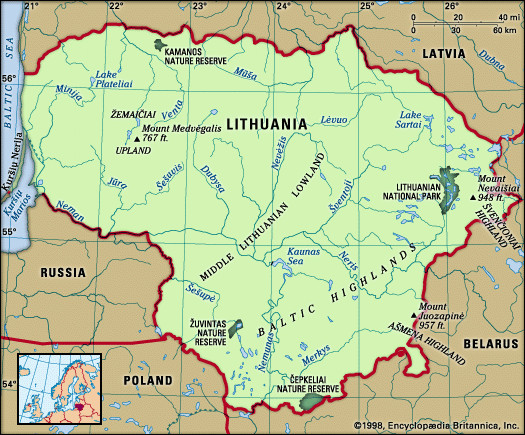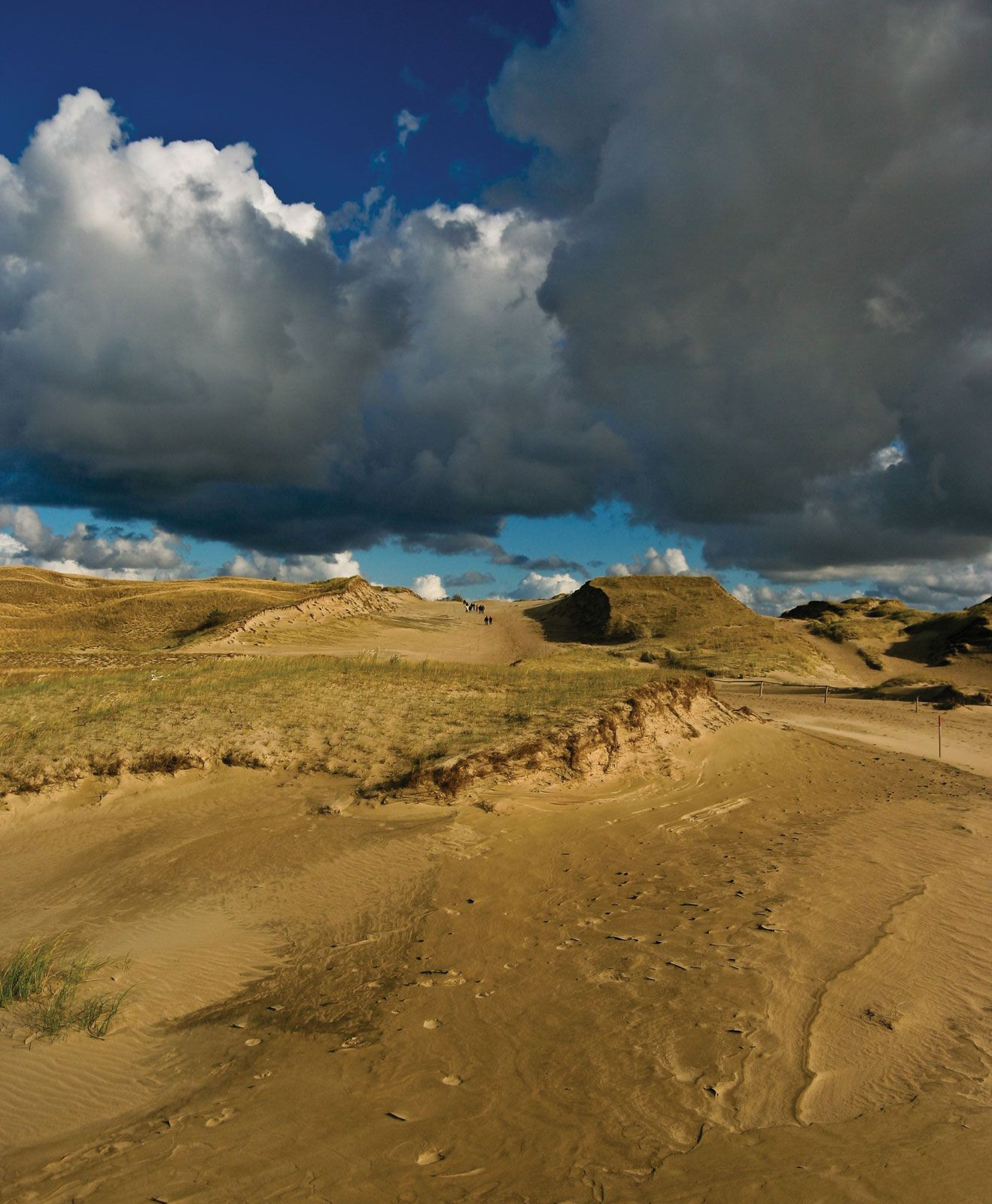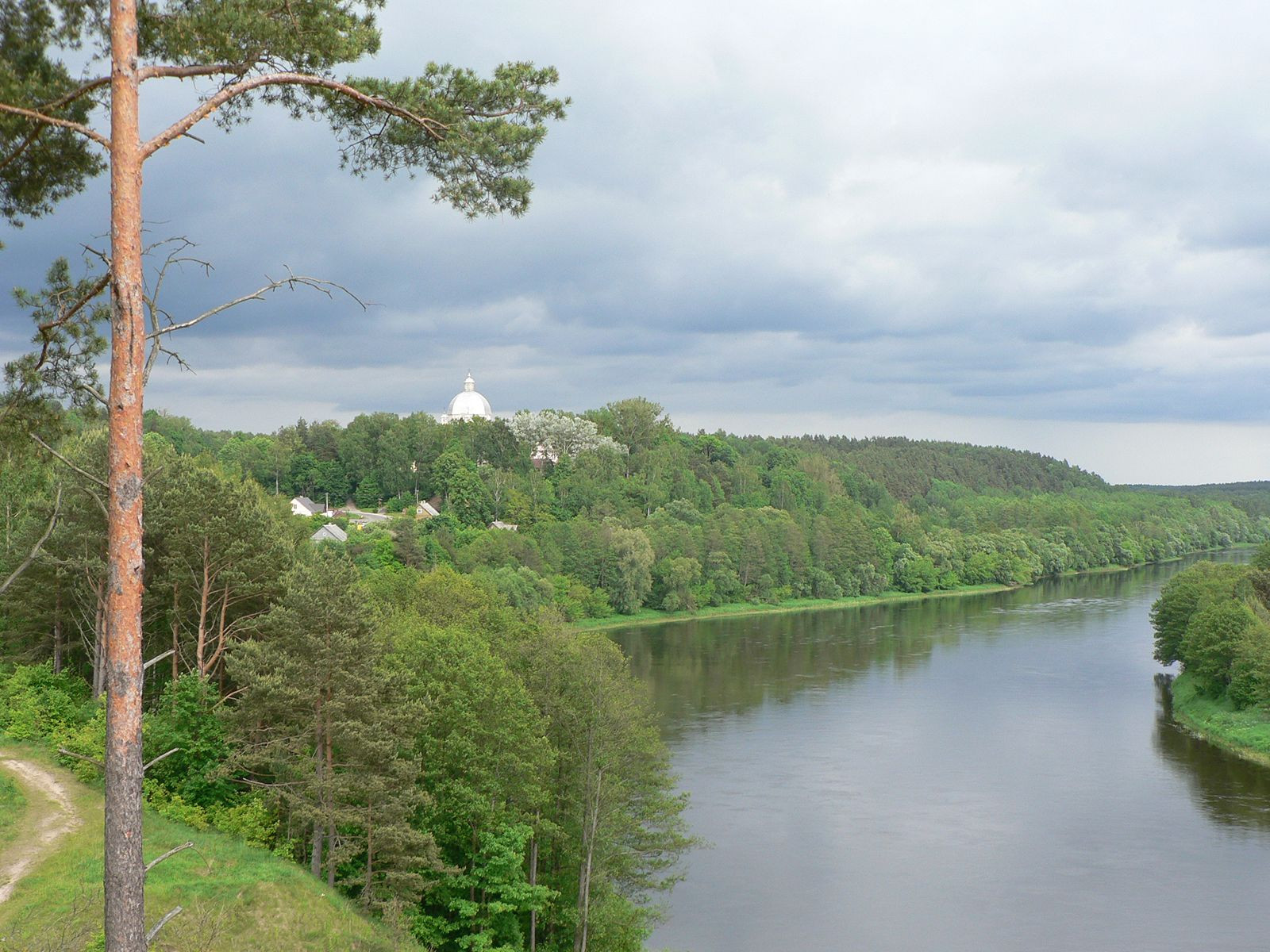Lithuania, a nation often discussed in the context of European geography and Baltic states, is situated in Northern Europe. To pinpoint exactly where Lithuania is in Europe, it lies on the eastern coast of the Baltic Sea. This puts Lithuania in a strategic location bordering several countries. To its north, you’ll find Latvia, while Belarus lies to the east and south. Poland and the Kaliningrad Oblast, a Russian exclave, form its southwestern border. Lithuania’s western edge is defined by the Baltic Sea, giving it a significant coastline and maritime influence in the region.
Exploring Lithuania’s Diverse Terrain and Relief
The landscape of Lithuania is largely shaped by the glacial activity of the Ice Age. This has resulted in a relatively flat plain characterized by moraines, ridge-like deposits left by glaciers. The terrain can be broadly divided into several distinctive regions. Along the Baltic coast, there’s a maritime depression area that gradually rises as you move eastward into the country. This coastal strip is known for its beautiful sand dunes and the unique Curonian Lagoon (Kuršiu Marios), which is almost separated from the Baltic Sea by the Curonian Spit. This remarkable 100-kilometer (60-mile) long sandspit is a prominent geographical feature of Lithuania’s western edge.
Moving inland to the east of the coastal region, you encounter the Žemaičiai Upland, which transitions into the expansive Middle Lithuanian Lowland. This lowland stretches across Lithuania from north to south and is composed of glacial lake clays and loams with boulders. Parts of this area are notably waterlogged. Further east and southeast, the Baltic Highlands rise, presenting a more varied topography with numerous hills and small lakes formed by glacial activity. Within these highlands, the Ašmena and Švenčioniai Highlands include the highest point in Lithuania, Mount Juozapinė, reaching 292 meters (957 feet) above sea level.
Rivers and Lakes: Lithuania’s Drainage System
Lithuania’s rivers are integral to its landscape, all flowing into the Baltic Sea. These rivers are typical of lowland regions, characterized by their slow currents and meandering paths. The most significant river is the Neman River (Nemunas), which flows through the heart of Lithuania, initially northward and then westward. Major tributaries feeding into the Neman include the Merkys, Neris, Nevėžis, Dubysa, Jūra, Minija, and Šešupė rivers, forming an extensive river network across the country. Adding to Lithuania’s scenic beauty are approximately 3,000 lakes, predominantly located in the eastern and southeastern parts of the country, a testament to its glacial past. The presence of boggy areas also contributes to the formation of peat, which is harvested and used in industry and agriculture.
Soil Composition and Climate
Lithuanian soils are diverse, ranging from sandy to heavy clay compositions. The northwestern part of Lithuania is characterized by loamy or sandy soils, sometimes marshy, and significantly podzolized due to leaching. The central region features weakly podzolized loamy peats, which are the most fertile soils in Lithuania, making this area ideal for cultivation. In contrast, southeastern Lithuania has sandy soils, somewhat loamy and moderately podzolized. Sandy soils are quite prevalent, covering about a quarter of Lithuania, and are often covered by woodlands.
Lithuania’s climate is a transition zone between maritime and continental climates. This results in a mix of damp Atlantic air masses with continental Eurasian air and occasional Arctic or southern tropical air. The Baltic Sea significantly influences the climate, especially in the coastal areas. January, the coldest month, sees average temperatures around -5 °C (low 20s F), while July, the warmest month, averages about 17 °C (60s F). Annual rainfall averages over 800 mm (30 inches), decreasing as you move inland. Rainfall is heaviest in August, except in the coastal strip where it peaks a couple of months later.
Plant and Animal Life in Lithuania
Lithuania’s vegetation is divided into three distinct regions. Maritime areas are dominated by pine forests and sand dune vegetation like wild rye and shrubs. Spruce forests are common in the eastern hilly regions. Central Lithuania is marked by oak forests, birch forests in the north, and groves of black alder and aspen. Pine forests are also prominent in the south. Forests cover about a third of Lithuania, with meadowlands accounting for another fifth. Swamps and marshlands make up a smaller portion of the land.
Lithuania boasts a rich wildlife population, including diverse mammals such as wolves, foxes, otters, badgers, ermine, wild boars, and various rodents. Deeper forests are habitats for elk, stags, deer, beavers, mink, and water rats. Birdlife is abundant with hundreds of species, including white storks, ducks, geese, swans, cormorants, herons, hawks, and occasionally bald eagles. Grouse and partridge are also common.
In conclusion, Lithuania is geographically located in Northern Europe, on the eastern coast of the Baltic Sea, characterized by a diverse landscape shaped by glacial history, a transitional climate, and rich biodiversity. Its location and natural features make it a fascinating country within the European continent.


 Curonian Spit
Curonian Spit Neman River
Neman River